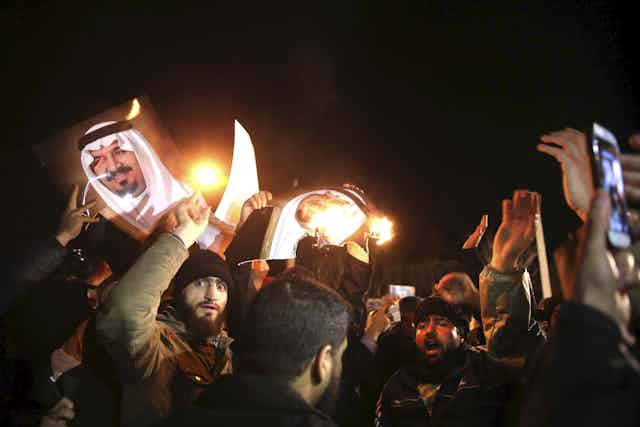Saudi Arabia’s execution of 47 people on Saturday, January 2 – its largest mass execution since 1980 – has sparked global shock and outrage.
The killing of Shi'a cleric Nimr al-Nimr has proven particularly controversial; al-Nimr was a vocal critic of Saudi Arabia’s ruling monarchy and had been arrested on charges of “instigating unrest” in 2012.
Iran said that Saudi Arabia would pay “a high price” for al-Nimr’s execution. This prompted Saudi Arabia to cut diplomatic ties with Iran.
The executions are notable for the sheer number of people killed. However, they maintain a policy of political crackdown that was reinvigorated in Saudi Arabia during the Arab Spring protests of 2011.
Crackdowns during the Arab Spring
The 2000s were a time of hope for many striving for legal and political reforms of the Saudi system. King Abdullah was seen by many as a relatively liberal ruler who would entertain activists and was willing to negotiate on some of the less contentious legal and social issues.
The protests of 2011 changed this. The regime’s paranoia about protesters and activists, such as Raif Badawi – who made a website that publishes articles critical of the regime and has been sentenced to ten years’ imprisonment and 1000 lashes – grew, as populist forces challenged entrenched authoritarian regimes throughout the Middle East.
Pre-empting such a development at home, Saudi Arabia quickly mobilised its security forces to crack down on protests in the country’s east and in neighbouring Bahrain. At the same time, it used its allies in the country’s religious establishment to paint any sort of political dissent as a Shi'a conspiracy linked to Iran, further stoking sectarian tensions in the Gulf and across the wider Middle East and North Africa.
Many of the small steps towards reform achieved over the past decade – including moves towards inter-sectarian tolerance and freedoms of debate – were discarded in favour of stability. Abdullah, the darling of many Saudi liberals, quickly became a target of derision, having sold out his espoused values to ensure the regime’s rule remained unchallenged.
Domestic consolidation
As the dust of the Arab Spring settled, the Saudi Arabian government moved to further consolidate its rule and quash future political dissent. New counterterrorism legislation enacted in 2014 effectively labelled political activism terrorism, with all the implied threats of reprisal associated with such an extreme term.
The number of executions, imprisonments and public floggings also grew during this time. Several high-profile examples captured global attention.
In many cases, punishment was for mundane crimes. But political activists seen to challenge the state’s authority have also been targeted. Such acts are undertaken as much to punish the individual as to educate the public that the state will brook no dissent.
For the government, the most concerning groups in this regard are the activists who champion the cause of the country’s Shi'a minority and militants who wish to establish what they see as an authentic form of Islamist governance in line with the fundamental philosophy of Wahhabism, enshrined in organisations such as Islamic State and al-Qaeda.
Saturday’s executions reflected these demographics. The beheadings sent a clear message to militant Islamists and the Shi'a that the state would not hesitate to employ its monopoly on violence against those who challenged its authority. The killing of al-Nimr was particularly poignant – it demonstrated that relative prestige is no shield against such a response.
Sticks and carrots
In a seeming paradox to such authoritarian measures, Saudi Arabia has continued to pursue some level of moderated reform. The 2015 municipal elections saw a continuation and expansion of the limited democratic process established under Abdullah. Women were allowed to run and vote for the first time.
Although these councils are a step towards representative governance, they retain little independent power. Only state-approved candidates are allowed to run for office, and the bodies have no formal power at the national level. Ultimately, the monarchy continues to dominate the rule-making process inside Saudi Arabia with few constraints.
The contrast between the 2015 elections and the Saturday executions is a clear signal that those adhering to the political rules will be rewarded – even if such benefits are hollow. However, those that erring from such a path can expect punishment, suffering, and further repression.
Note: this article has been amended to correct the number of lashes Raif Badawi was sentenced to.


